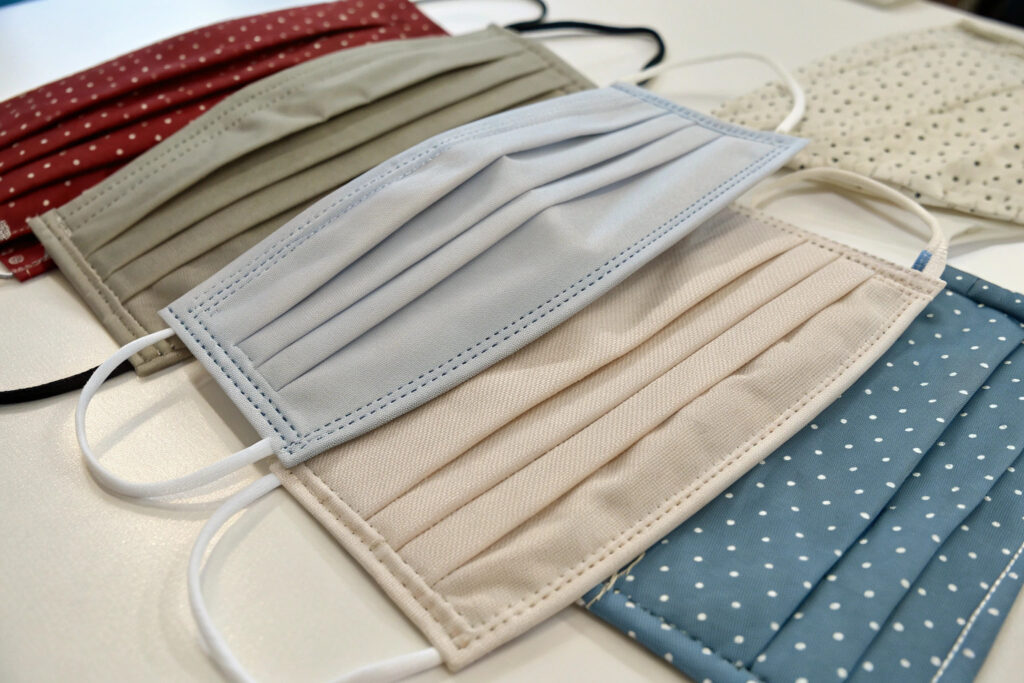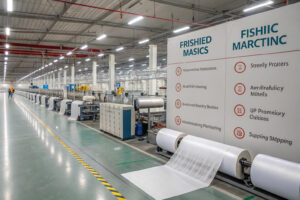When buyers search for fabric masks today, they are overwhelmed by countless options. Many of these masks look similar, but their performance and comfort levels are very different. The challenge for professional buyers is to identify which products meet international standards and satisfy end-users. Without clear guidance, costly mistakes in sourcing are easy to make.
A high-quality pleated flat fold fabric mask is defined by its breathability, layered construction, comfort-focused design, and durability. These features not only protect the wearer but also ensure long-term customer satisfaction, making them a smart investment for bulk orders.
That is why I want to explain the essential features that matter most. By sharing practical sourcing knowledge from our 10+ years in the mask manufacturing industry, I will help buyers like you make informed decisions that reduce risk, save time, and improve product quality.
What Materials Ensure Maximum Comfort and Safety?
The choice of materials decides whether a fabric mask feels like a second skin or a heavy burden. Buyers often face problems when sourcing masks that irritate skin, retain odors, or lack proper filtering ability. These issues not only cause customer complaints but also damage brand reputation.
The best pleated flat fold masks use multi-layered fabrics such as 100% cotton for softness, polyester blends for strength, and optional non-woven inserts for filtration. This combination balances comfort, durability, and safety for daily wear.

Why Is Cotton Still the Preferred Fabric?
Cotton remains a top choice because it is breathable, washable, and gentle on the skin. Many medical studies have proven that tightly woven cotton provides strong barrier performance. Retailers value cotton masks since they align with CDC mask guidance. Cotton masks also absorb sweat better than synthetic fabrics, making them practical for everyday use. Buyers who source masks with higher thread count cotton see stronger repeat orders due to comfort feedback.
Are Multi-Layer Constructions Really Necessary?
Yes, they are. A mask with at least two to three layers offers much better filtration. For example, combining cotton with a polypropylene non-woven layer significantly increases protective performance. This feature is especially important for large buyers in the U.S. and Europe, where compliance with EN 14683 or ASTM standards is often requested. Multi-layer masks also allow suppliers to market their products as both fashionable and functional, creating a wider sales channel.
How Important Is Breathability in Fabric Masks?
When masks restrict airflow, people simply do not wear them. This is one of the biggest problems buyers face when sourcing low-cost products. Complaints about shortness of breath or foggy glasses often lead to product returns and poor customer reviews.
High-quality pleated flat fold fabric masks are engineered with breathable weaves and ergonomic folds that allow easy airflow while maintaining filtration efficiency. This balance makes them practical for long hours of wear in both daily and professional environments.
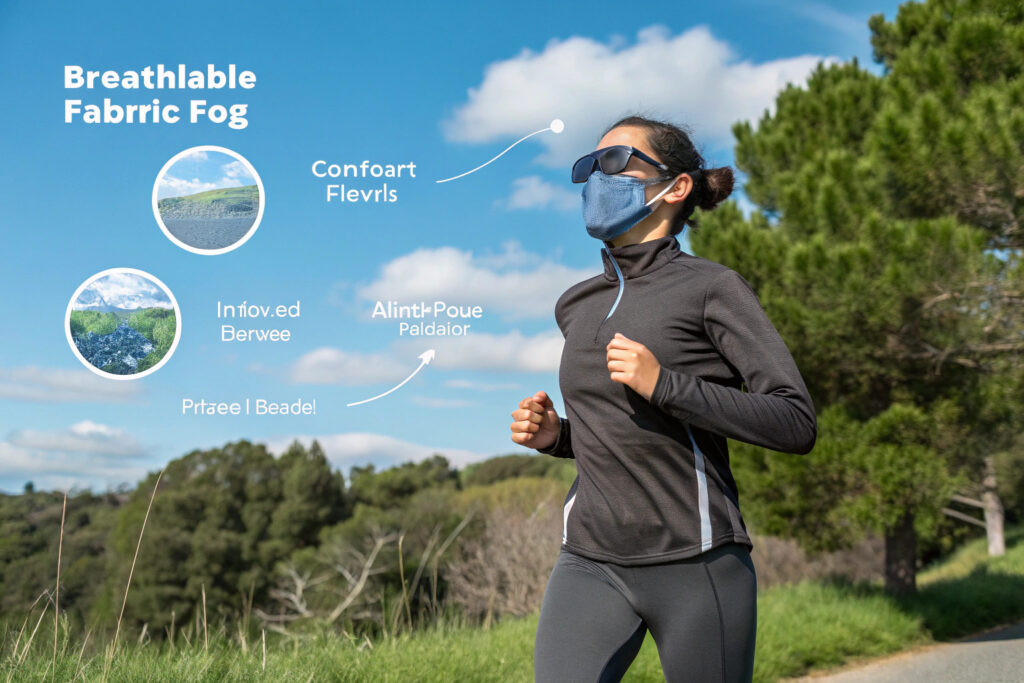
Do Breathable Fabrics Compromise Protection?
No, not if chosen correctly. Advanced fabric weaving methods, such as high-density cotton, keep the structure tight enough to block particles while allowing comfortable airflow. Masks designed with pleats naturally increase the surface area, improving airflow without reducing efficiency. Buyers often find that suppliers who focus on breathability achieve higher customer satisfaction.
Why Does Mask Design Affect Breathability?
The pleated flat fold design expands and contracts with facial movement. This prevents tight pressure points and makes breathing easier. Unlike rigid molded masks, pleated styles adjust to different face shapes. In large-scale supply, this versatility reduces size complaints and return rates. Additionally, using fabrics with moisture-wicking finishes further improves comfort, which is essential for sportswear retailers entering the mask market.
What Role Do Adjustable Features Play in Fit?
Fit determines whether a mask is actually worn or constantly removed. For bulk buyers, sourcing poorly fitting products leads to wasted stock. Masks that slide off the nose or press painfully on ears quickly lose consumer trust.
The best pleated flat fold fabric masks include adjustable ear loops, flexible nose wires, and optional lanyards to ensure secure fit and maximum comfort. These features reduce leakage, prevent fogging of glasses, and make the masks suitable for wider demographics.
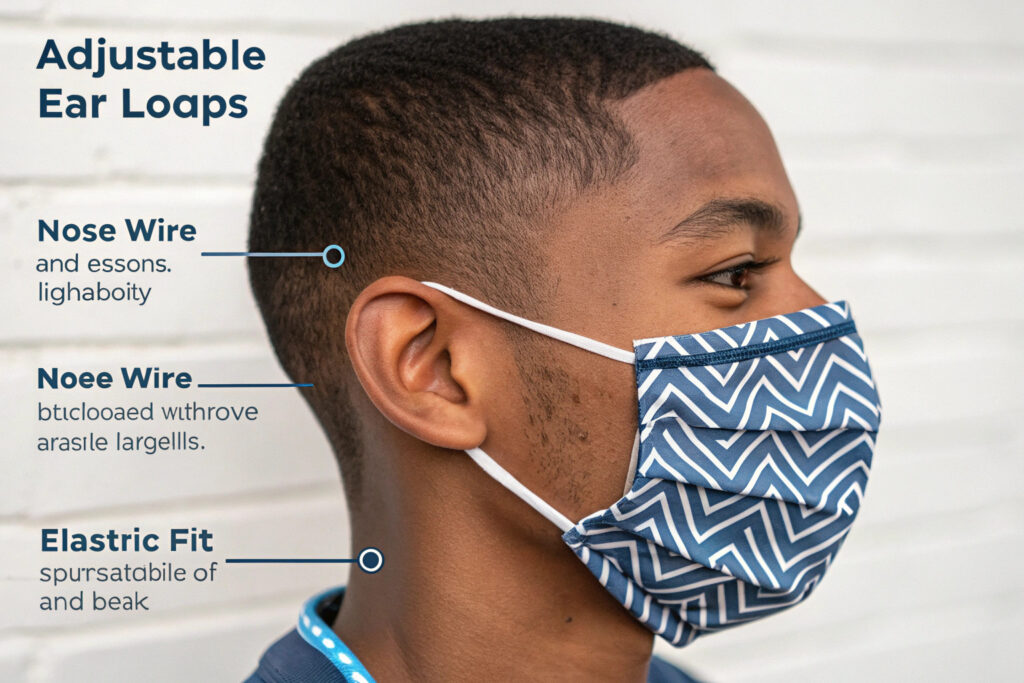
Why Are Adjustable Ear Loops a Must-Have?
Elastic ear loops with adjusters solve one of the most common complaints: ear pain. According to Healthline’s report on mask comfort, adjustable straps reduce pressure and make masks wearable for longer periods. In wholesale markets, this small detail often decides which supplier wins repeat contracts. Many retailers now demand masks with ear savers or cord locks as standard.
How Does a Nose Wire Improve Performance?
A flexible nose bridge ensures that the mask seals properly on different face shapes. This prevents air leakage and reduces fogging for people wearing glasses. For professional buyers, sourcing masks with high-quality aluminum or stainless steel nose wires offers a stronger sales pitch to optical retailers. Nose wires also improve the professional appearance of the product, helping it stand out from basic low-cost alternatives.
Why Does Durability Matter for Reusable Masks?
Disposable masks create waste and cost more in the long run. For sustainability-driven buyers, the question is not whether fabric masks can be reused, but how long they maintain performance. Masks that shrink, fade, or lose elasticity after a few washes damage both consumer trust and brand value.
A premium pleated flat fold fabric mask should withstand at least 30+ wash cycles without significant shrinkage, fading, or loss of function. This durability ensures better sustainability, stronger retail margins, and higher consumer confidence.
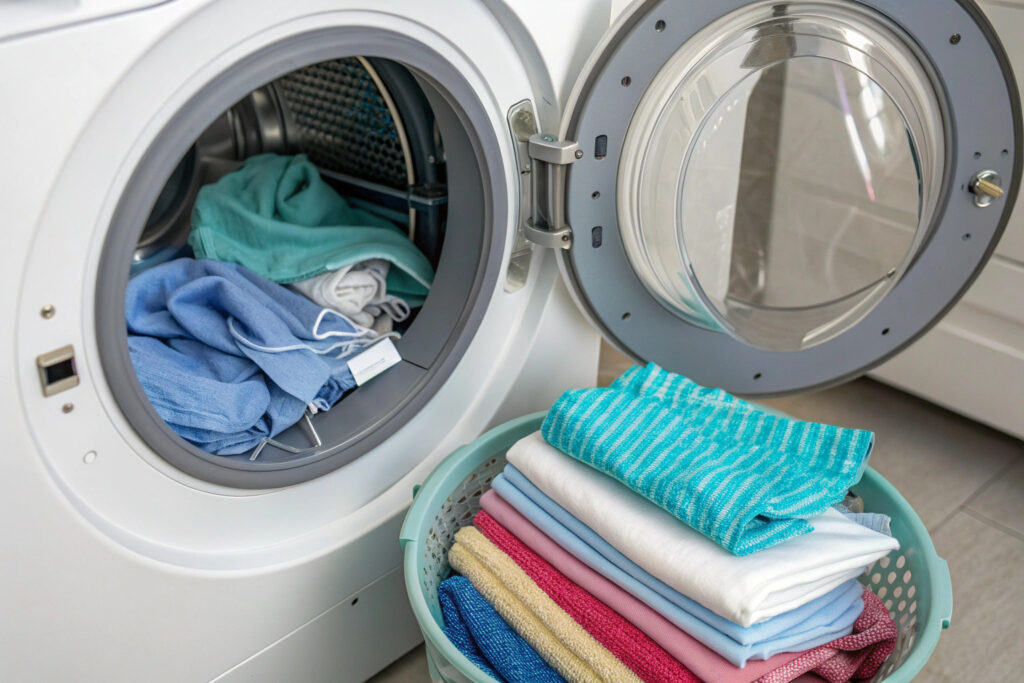
Do Washing Tests Prove Real Quality?
Yes. Independent testing such as SGS textile certification verifies shrinkage, colorfastness, and durability. Buyers who demand these reports gain stronger protection against supplier risks. For example, in Europe, many retailers will not accept shipments without third-party wash test data. This level of quality assurance creates trust between manufacturers and buyers, especially in B2B wholesale.
How Does Durability Affect Market Position?
Durability directly supports sustainability goals. Many buyers now position reusable masks as eco-friendly products that align with UN Sustainable Development Goals. Longer product lifespans reduce consumer costs and environmental impact. For wholesalers and private-label brands, durability also becomes a strong marketing point to differentiate their products from competitors relying on cheap disposables.
Conclusion
A high-quality pleated flat fold fabric mask is more than just a piece of cloth. It is a carefully engineered product that combines safe materials, breathable design, adjustable fit, and long-term durability. Each of these features solves a real pain point faced by both end-users and professional buyers.
If you are considering sourcing your own line of pleated fabric masks or want to expand into sustainable reusable accessories, our company Shanghai Fumao can help. Contact our Business Director Elaine at elaine@fumaoclothing.com to start developing your next successful mask collection.

